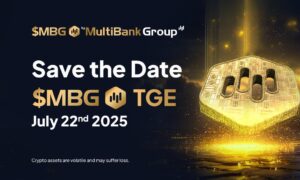As the cryptocurrency market continues to expand, with an increasing number of blockchain networks and digital assets, the challenge of interoperability has become more pronounced. Traders and investors often find themselves navigating a maze of exchanges and blockchain platforms, each with its own set of rules, fees, and transaction times.
This fragmentation not only complicates the trading process but also leads to inefficiencies such as price discrepancies and limited liquidity. That is why it’s important to find a secure and easy-to-use platform like Jumper Exchange, whose mechanism of operation and the transformative impact they are having on cryptocurrency trading are massive.
The bridge aggregators 101
Bridge aggregators act as visionary architects in a major change in the cryptocurrency market integration and operation, catalyzing the transition to an inter-connected and neat digital currency trading space. A bridge aggregator is a platform that enables asset and information transfer between different blockchain networks.
This capacity can be essential in a situation where hundreds of blockchain networks function de facto brute and independently, each with its own protocols, tokens and governance strategy.
By enabling assets to move freely between these networks, bridge aggregators are solving one of the most pressing challenges in the crypto space: the capability of different systems to work together seamlessly, a feat that is becoming increasingly crucial in today’s connected world.
The old vs. The new: A trading revolution
The cryptocurrency trading world is experiencing a significant transformation of the market which sharpens the gap between the past ways of trading and a new era installed by the inflow of bridge aggregators.
This change is comparable to the move of conventional telephony to the kind of comfortable web that never becomes disconnected. We will now scrutinise the intricacies of the modern trading environment, where there is a sharp dichotomy in trading activity, as compared to the past, and the bridging platforms which underpin this revamping trend.
The old ways: Navigating a fragmented landscape
It can be fairly said that before the appearance of coasters the cryptocurrency trading area was subdivided. Till now, traders were locked to respective Blockchain ecosystems with the incapability to work in coordination due to their own sets of laws, costs and processing time.
Not only did it complicate the trade processes, but also it decreased efficiency as it limited the traders’ access to the global market. No adoption of one of the blockchains as a standard currency had been achieved, so the investors and traders had to go through various trading platforms (exchanges) to look for the best prices and the trade of specific asset pairs, encountering high fees and low transaction speed at the same time.
This process was analogous to conducting international business without the Internet because each of those transactions needed a separate, frequently very complex, process. It took much more time.
The new era: Seamless trading with bridge aggregators
The decentralized nature of bridge aggregators has emerged as a breakthrough in the blockchain trading experience, providing a highly unified and user-friendly platform for digital currency trading. They are the “bridge” between the many blockchain networks that remain independent.
So, values and information may flow freely through blockchain platforms that were previously disconnected. Through the grouping of liquidity from different sources and making possible transactions among chains, bridge aggregators thus have greatly simplified and improved the former mickle of trading across various blockchains.
This new trading paradigm offers several advantages over the old ways. Firstly, it provides traders with access to a much larger pool of liquidity, ensuring better price discovery and the opportunity to execute larger trades without significantly impacting the market price.



































